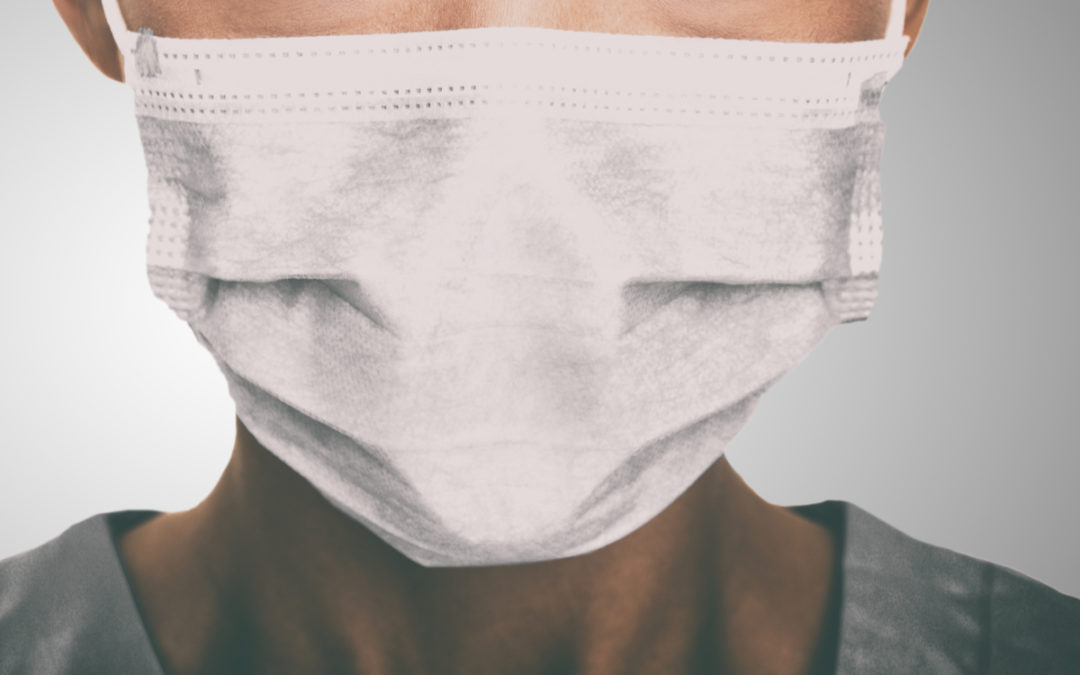Here’s a guest blog from a friend and colleague who practices Undersea and Hyperbaric Medicine and is also a Critical Care physician. I believe that she should remain anonymous for now. However, I was inspired by the emails and texts she has sent me and thought you would be, too. She’s sending me messages off the cuff – they are “raw” and not edited by her. However, I think that is best. She uses a lot of abbreviations and when I thought it was useful, I explained them in brackets. One day at the right time, I will tell you who she is and we can all thank her properly for her courage and commitment. Here are her COVID-19 Diaries – uncensored.
–Caroline
Today was crazy. So crazy that in trying to write about my experiences, I am having difficulty recalling my morning as it feels like it was weeks ago.
I start my day by looking over the morning blood gases and ventilator settings. I picked up a call from radiology, informing me that my most stable patient has a left pneumothorax. So I contacted my surgeon and told him that she needed a chest tube and I had a couple of other patients that needed central lines. Normally, those procedures would be the responsibility of the critical care physicians. But, on their own, (since they continue to be prohibited from operating except in emergencies) the surgeons decided to help us with them – and it has been a Godsend!
Rounds went smoothly. I even taught about West zones of the lung and why we prone patients, weaning parameters and all those fun things we do in ICU. Nurses were happy, flow was good, orders were in, labs and meds updated, pharmacy was happy with our dosing etc. I went to write my notes, made some calls to family members – as they’re not allowed to see their family members in the hospital for the most part. I round again to check on labs, and respond to the therapies we ordered in the morning. So far, so good.
Withdrawing Care on a COVID-19 Patient
Then it was time to withdraw care from one of my patients. Her family had been amazing, knowing that she didn’t have the physical stamina to survive. The family could not come into the ICU, so they had written goodbye letters to her which the staff read to her. We made sure she had enough medication on board to not feel the effects of coming off of the ventilator. Usually the respiratory therapist and nurse are present for the withdrawal of care. However, I stayed too. It just seemed fitting that this patient had three people holding her hand and comforting her as she transitioned from life support to the end of life. The nurse held her hand. The respiratory therapist stroked her hair and told her how beautiful she was – and she was a very beautiful woman. I prayed for her. She went peacefully.
Code City
As I was doffing the PPE [personal protective equipment, CF], a cardiac arrest happened next door. There was a brief moment of confusion because we weren’t sure if we should do CPR since we knew it really would not do anything to save the patient. We did it anyway. We couldn’t resuscitate her and she died. I suspect it was a PE [pulmonary embolism, CF]. We finished the code and were hoping to huddle afterwards as a group to discuss what we did well, what could’ve been done better etc, then another code was called for a cardiac arrest. So the team ran to that one. Then, I went to the ER to evaluate a patient that was a borderline ICU admission, but decided he could stay in telemetry. Then another cardiac arrest was called on the floors. All in all, three patients died in a matter of thirty minutes.
Now nervous, I rounded again on my sickest patients to make sure that they had what they needed to be optimized. After doffing my gown and gloves, but still wearing my N95 mask and goggles (which I now wear on the wards at all times), I heard a loud thump and saw staff running. I ran over to see what was happening and there was an ICU staff member having a grand mal seizure on the floor. We positioned her as comfortably as we could and waited out the tonic clonic phase of the seizure, then sent her to the ER.
The Passover Angel of Death
COVID-19 does things in clusters: severe respiratory failure, increasing inflammatory markers, increasing procoagulant factors, venous thrombosis, renal failure, pulmonary barotrauma [pneumothorax, CF], then sudden cardiac arrest. The plagues of COVID-19.
Today, on Pesach, it seemed like the Angel of Death passed over our little hospital and took three of our patients.
The Hebrew people put the blood of the lamb on their doorposts so that the angel of death would pass over their homes and they would be safe. The blood of the lamb was their Personal Protective Equipment.

Dr. Fife is a world renowned wound care physician dedicated to improving patient outcomes through quality driven care. Please visit my blog at CarolineFifeMD.com and my Youtube channel at https://www.youtube.com/c/carolinefifemd/videos
The opinions, comments, and content expressed or implied in my statements are solely my own and do not necessarily reflect the position or views of Intellicure or any of the boards on which I serve.



